New Grammar School was a controversial move
This article contains affiliate links. We may earn a small commission on items purchased through this article, but that does not affect our editorial judgement.
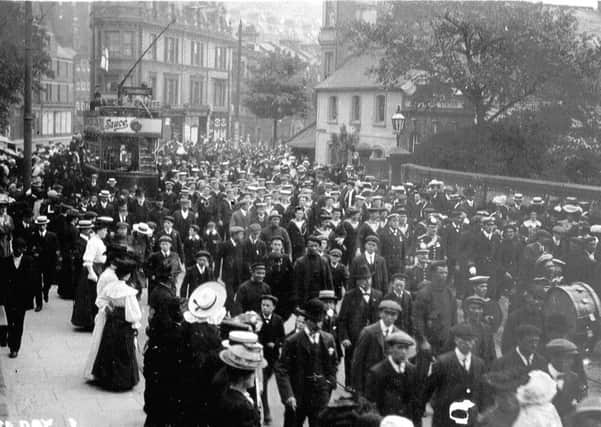

He writes: The last part of Queens Road to be developed was the short stretch from junction with the end of Stonefield Road to the railway bridge.
Around the end of the 19th century, after several re-namings and re-numberings, Queens Road was designated Nos. 1 to 130 on the eastern side and 131 to 212 on the western side with 212 opposite No 1 so that the substantial block of 4 shops and houses erected toward the end of the 19th century evolved as 130a, 130b, 130c and 130d with 130 on the southern side of the Junction.
Advertisement
Hide AdAdvertisement
Hide AdIn the meantime, by 1881 Hastings Council had agreed to the create a new road, to be called Nelson Road from Queens Road opposite the junction of Waterworks Road and crossing Stonefield Road up to the proposed site of the new Grammar School, on the Milward Estate.
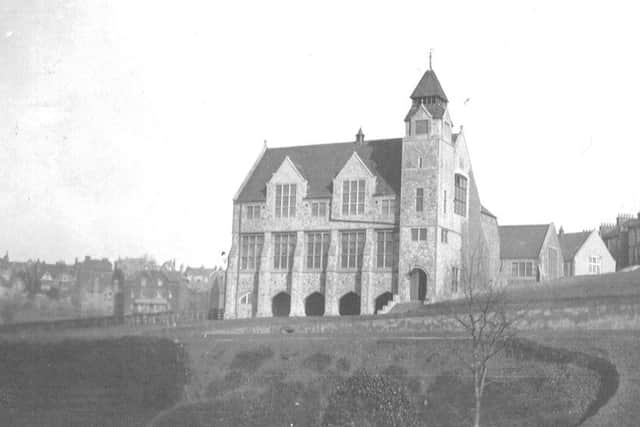

From as far back as 1878 The Charity Commissioners had agreed that a Hastings Grammar School could be set up by merging the Parker and Saunders charities and by giving £6,000 funding from the Magdalen charity and the new school moved into its first premises, Bleak House, (John Banks’ schoolroom) at the southern end of Stonefield Road in 1880. The schoolroom is still standing today.
The new school finally opened in Nelson Road, with the foundation stone being laid on 6 September 1882. There was considerable controversy, for the school was aimed at middle class children, but the building had been paid for by the Magdalen Charity which was set up exclusively for the benefit of the poor in the parishes of All Saints and St Clement’s.
The school remained there until moving to new buildings in Parkstone Road in the autumn of 1964 after which the old premises were demolished and replaced by houses in 1972.
Advertisement
Hide AdAdvertisement
Hide AdIn 1978 the school became a comprehensive school, named the William Parker School after its 1619 benefactor.
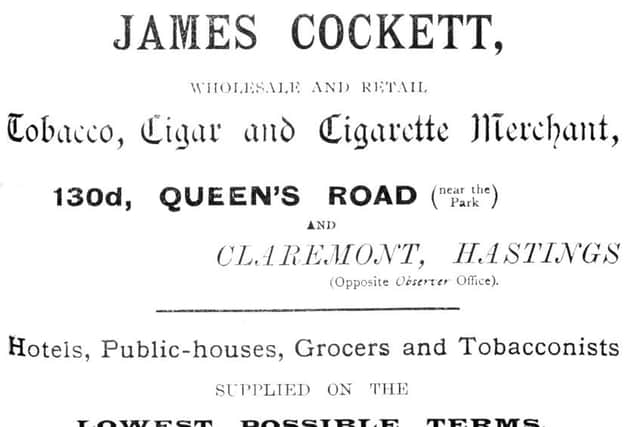

In Baines’ ‘Historic Hastings’ he notes “Up to and including the Great War, a native of the town would refer to himself proudly as an “old Hastinger”. But sometime about 1915 the word “Hastonian “ was introduced by the Grammar School, possibly as being vaguely reminiscent of “Etonian”.
This has been taken up locally, many Old Boys remaining in the town, and has now replaced the old fashioned but etymologically more correct” Hastinger “In view of the distinction for independence gained in A.D. 771 and 1011 by the ancient tribe Haestingas, this is a pity.”
Industry was attracted to this end of Queens Road when a major artificial stone manufacturer, Jacob Elliott set up business, described in Pikes Views and Reviews published in 1897 – “Messrs Jacob Elliott & Sons, Manufacturers of Artificial Stone and a new Patent Stone Composition, 130A Queens Road. It may seem strange to some people, that it should be necessary to make artificial stone, considering the number of quarries we possess, but after all, the manufacture of bricks, which is a somewhat similar industry, is of very ancient date.
Advertisement
Hide AdAdvertisement
Hide AdIn modern times, however, science has; been brought to bear with remarkable success on the production of artificial slabs and stones of all kinds for building, paving, and other purposes, and this branch of business has become a very large and important industry.
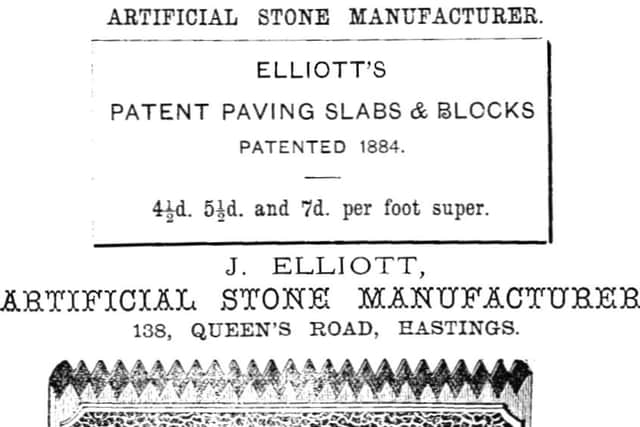

Probably the most successful pioneer in this direction has been Mr. Jacob Elliott, who, for close on a quarter of a century, has occupied a leading position in this branch of trade, and whose valuable patents have, in fact, revolutionised the industry.
For some years Mr. Elliott devoted his attention principally to the production of light ornamental work, such as flower boxes, vases, etc, but he was constantly engaged in making costly scientific experiments, and eventually brought out and patented an artificial stone paving slab, which at once asserted its superiority over all similar productions in the market.
In 1885 Mr. Elliott laid down these slabs, in competition with those of eleven other makers, as a test for the Islington vestry in Loudon, and after two and a half years of hard wear the Elliott paving was declared to be by far the best, and was finally adopted by the vestry.
Advertisement
Hide AdAdvertisement
Hide AdIn the following year Mr. Elliott obtained permission to lay a sample test piece for the City Sewers Commissioners in Liverpool Street, London, and was congratulated by the then Inspector of Pavements of that district, and other gentlemen who were competent to judge that he had invented “the best artificial stone paving on the market for appearance and wear. This paving is also extensively used in other towns, and is not affected by frost or any atmosphere.”
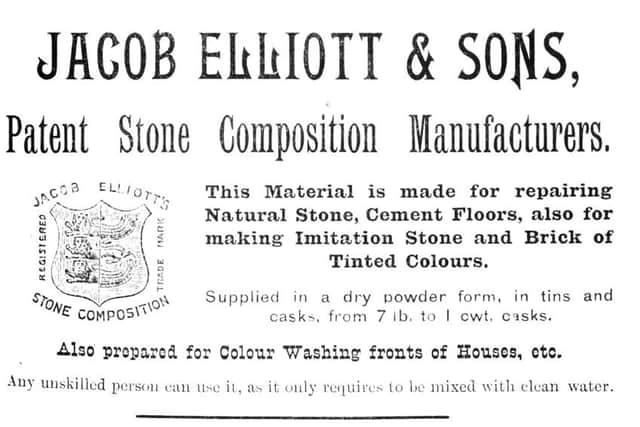

The eulogy continues in this vein and finally tells us: “The premises are extensive and well equipped with mould, plant, and machinery for turning out plain and ornamental work in artificial building stone and pavings, slabs and specialities, kerbing, headstones, ornamental work etc. “A large contract in kerbings and channelling is at present being carried out for the Corporation of Chichester. Orders to any extent can be promptly executed, and the firm have an extensive connection among architects, contractors, builders, and others throughout the kingdom.”
Pike also describes Mansfield & Co, Wine, Spirit and Beer Merchants at 130 Queens Road “Messrs. Mansfield and Co. have been scarcely a twelve month established, but they have already made a sound and rapidly increasing connection among the best classes of patronage in the town and district. This is certainly a notable achievement, considering the many powerful old established rivals the firm have had to meet; but on the other hand, it is sufficiently explained by the excellent business system and their enterprise in meeting the tastes and requirements of the public in genuine high class beverages, supplied in large or small quantities at very low cost.
“The firm hold large stocks of wines and spirits in reserve at Her Majesty’s bonded warehouses in the London and St. Katherine’s Docks, and also at Dublin and Glasgow, and from these the capacious duty paid stores and cellars at 130, Queen’s road, Hastings, are replenished from time to time, to meet the demands of the business.
Advertisement
Hide AdAdvertisement
Hide Ad“These premises are situated in good business position, and comprise a large handsome corner block at the junction of Queen’s Road and Stonefield Road, and close to the Park. The general and private offices are commodious and appointed throughout in first class modern style, and the spacious well constructed stores and cellars in the basements and to the rear, are well adapted for the purposes of the business, and are always heavily stocked with the various goods.”
All illustrations throughout this series are from Ion Castro’s own collection and he can make available copies of many of the historic images used in this series. Ion has a few reproduction copies of Pike’s ‘Views and Reviews’ still available for £12.99, contact him - [email protected] or tel 01424 437468 and there’s more local history on Ion’s website, www.historichastings.co.uk
Captions:


Cockett 1901.
At the turn of the last century James Cockett occupied 130d trading as a Tobacco, Cigar and Cigarette Merchant.
Elliott 1885.
In 1885 Jacob Elliott and sons were trading as artificial Stone manufacturers from 138 Queens Road, by the end of the century they had moved across the road to new premises at 130a.
Elliott 1901.
Advertisement
Hide AdAdvertisement
Hide AdThis advertisement from 1901 shows J Elliott & Sons had moved to new premises at 138 Queens Road to 130a. By the first war the firm had disappeared from Hastings.
Empire Day.
The celebration of Empire Day dates from 1898 and was originally celebrated as Queen Victoria’s birthday, 24th May, until her death in 1901. After 1958 it has been known as Commonwealth Day. This postcard from the early 20th century shows the off-licence at No 130 behind the tram that is heading into town. On the right can be seen the Gas Testing Station which housed the equipment used by the Council in their statutory duty of monitoring the quality etc of the coal gas supplied by the local Gas Company.
Goddard 1901.
In 1901 W Goddard, Builder and Decorator was operating from 130a Queens Road, and ‘lived above the shop’, his workshops were at 10 Castle Road (now Castle Hill Road).
Grammar School.
An early view of the Hastings Grammar School before all the additions and extensions
Mansfield.
Advertisement
Hide AdAdvertisement
Hide AdThe premises of Messrs Mansfield and Co, Wholesale and family Wine and Spirit Importers, Beer Merchants etc. in 1897
Don’t miss out on all the latest breaking news where you live.
Here are four ways you can be sure you’ll be amongst the first to know what’s going on.
1 Make our website your homepage at www.hastingsobserver.co.uk
Advertisement
Hide AdAdvertisement
Hide Ad2 Like our Facebook page at www.facebook.com/hastingsobserver
3 Follow us on Twitter @HastingsObs
4 Register with us by clicking on ‘sign in’ (top right corner). You can then receive our daily newsletter AND add your point of view to stories that you read here.
And do share with your family and friends - so they don’t miss out!
The Hastings Observer - always the first with your local news.
Be part of it.